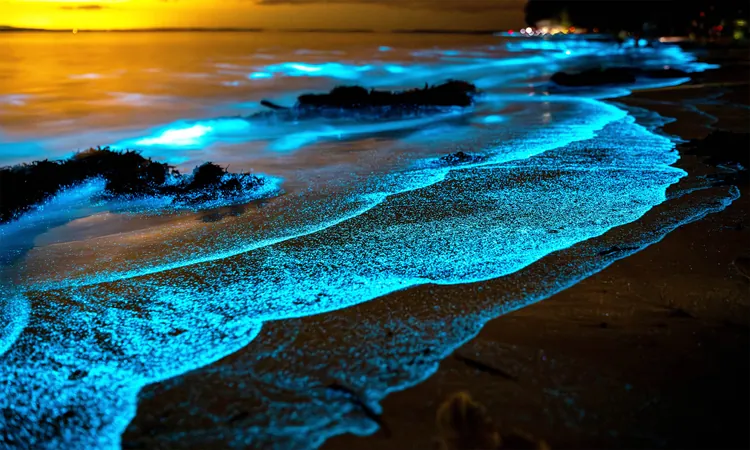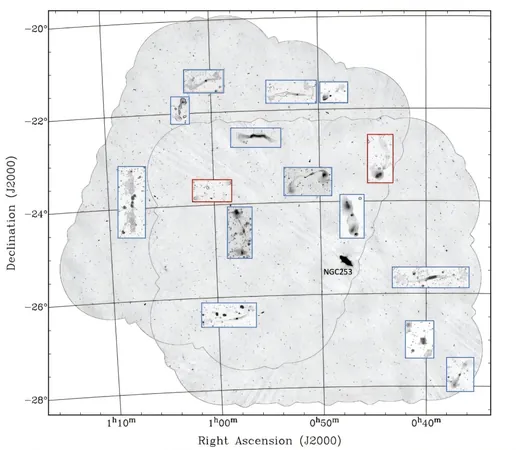
Mystifying 'Milky Seas' Phenomenon: The Ocean's Glowing Enigma Unveiled After 400 Years
2025-04-14
Author: Arjun
The Surreal Wonder of Milky Seas
For centuries, sailors have been captivated by an extraordinary sight: vast, glowing expanses of ocean lit up during the night, casting a soft white or greenish luminescence across the waves. These enchanting phenomena, known as "milky seas," are so brilliant they can illuminate a ship’s deck and are even visible from space, sometimes covering areas as vast as 100,000 square kilometers.
A Deep Dive into the Mystery
Researchers from Colorado State University (CSU) have made significant strides in understanding these elusive events, compiling a groundbreaking database that chronicles 400 years of sailor observations, Marine Observer Journal data, and modern satellite imagery. This groundbreaking initiative aims to transition folklore into scientific reality and uncover how these bioluminescent seas interact with large-scale Earth systems.
What Causes Milky Seas?
Despite centuries of accounts, the science behind milky seas remains a tantalizing mystery. Experts suspect that the luminescence is triggered by the activity of Vibrio harveyi, a luminous bacterium that can form massive blooms under specific conditions. However, due to the rarity of these occurrences, particularly in the remote Indian Ocean, only limited data has been gathered to validate this theory.
Transforming Folklore into Facts
The newly compiled database chronicles milky sea sightings back to the 17th century, meticulously documenting their occurrence alongside satellite imagery and known climatic patterns. The researchers discovered that most milky sea events concentrate around the Arabian Sea and Southeast Asia, closely linked to significant climate phenomena such as the Indian Ocean Dipole and El Niño Southern Oscillation.
Illuminating the Biological Connection
While bioluminescence is not uncommon in nature—think of fireflies and glowing jellyfish—milky seas stand out due to their massive scale and enduring glow. The only significant biological evidence comes from a water sample collected in 1985, during an unintentional encounter with a glowing sea. Preliminary results revealed luminous bacteria surrounding algae blooms, hinting at why these phenomena exhibit such a uniform glow. However, this solitary sample leaves much to be explored.
Future of Research in the Glowing Oceans
Researcher Justin Hudson aims to send a vessel to study milky seas firsthand, potentially achieving what no one has accomplished before: reaching these glowing expanses in time for scientific observation. Thanks to the new database, scientists hope to accurately predict future occurrences, enhancing their chances of direct study.
Bridging Gaps in Earth Science
Co-author of the study, Professor Steven Miller, has long been intrigued by milky seas and pioneered satellite imaging efforts of this phenomenon. For him, this research extends beyond solving ancient riddles; it opens doors to understanding a previously overlooked component of our planet’s biosphere.
Looking Ahead: The Implications of Milky Seas
As Hudson prepares to defend his thesis, he is optimistic about new research avenues that could reveal how milky seas impact their surrounding ecosystems. "They might signify either a healthy ecosystem or a distressed one,” he noted. The bacteria involved may be detrimental to marine life, which makes understanding milky seas crucial.
Ultimately, this groundbreaking study marks a significant leap toward comprehending the complexities of our oceans, spotlighting an enchanting mystery that has dazzled humans for centuries.
Stay Updated on Oceanic Wonders
To explore more compelling insights into our planet’s mysteries, subscribe to our newsletter for engaging content, exclusive updates, and much more.




 Brasil (PT)
Brasil (PT)
 Canada (EN)
Canada (EN)
 Chile (ES)
Chile (ES)
 Česko (CS)
Česko (CS)
 대한민국 (KO)
대한민국 (KO)
 España (ES)
España (ES)
 France (FR)
France (FR)
 Hong Kong (EN)
Hong Kong (EN)
 Italia (IT)
Italia (IT)
 日本 (JA)
日本 (JA)
 Magyarország (HU)
Magyarország (HU)
 Norge (NO)
Norge (NO)
 Polska (PL)
Polska (PL)
 Schweiz (DE)
Schweiz (DE)
 Singapore (EN)
Singapore (EN)
 Sverige (SV)
Sverige (SV)
 Suomi (FI)
Suomi (FI)
 Türkiye (TR)
Türkiye (TR)
 الإمارات العربية المتحدة (AR)
الإمارات العربية المتحدة (AR)